-
EXECUTIVE SUMMARY
-
Market Overview
-
Key Findings
-
Market Segmentation
-
Competitive Landscape
-
Challenges and Opportunities
-
Future Outlook
-
MARKET INTRODUCTION
-
Definition
-
Scope of the study
- Research Objective
- Assumption
- Limitations
-
RESEARCH METHODOLOGY
-
Overview
-
Data Mining
-
Secondary Research
-
Primary Research
- Primary Interviews and Information Gathering Process
- Breakdown of Primary Respondents
-
Forecasting Model
-
Market Size Estimation
- Bottom-Up Approach
- Top-Down Approach
-
Data Triangulation
-
Validation
-
MARKET DYNAMICS
-
Overview
-
Drivers
-
Restraints
-
Opportunities
-
MARKET FACTOR ANALYSIS
-
Value chain Analysis
-
Porter's Five Forces Analysis
- Bargaining Power of Suppliers
- Bargaining Power of Buyers
- Threat of New Entrants
- Threat of Substitutes
- Intensity of Rivalry
-
COVID-19 Impact Analysis
- Market Impact Analysis
- Regional Impact
- Opportunity and Threat Analysis
-
HEALTHCARE PERSONAL PROTECTIVE EQUIPMENT MARKET, BY PRODUCT TYPE (USD BILLION)
-
Protective Clothing
-
Gloves
-
Face Masks
-
Goggles
-
Face Shields
-
HEALTHCARE PERSONAL PROTECTIVE EQUIPMENT MARKET, BY END USER (USD BILLION)
-
Hospitals
-
Clinics
-
Long-term Care Facilities
-
Home Care
-
Pharmaceutical Companies
-
HEALTHCARE PERSONAL PROTECTIVE EQUIPMENT MARKET, BY MATERIAL TYPE (USD BILLION)
-
Fabric
-
Plastic
-
Rubber
-
Polypropylene
-
Nitrile
-
HEALTHCARE PERSONAL PROTECTIVE EQUIPMENT MARKET, BY APPLICATION (USD BILLION)
-
Infection Control
-
Hazardous Material Handling
-
Surgical Procedures
-
Patient Care
-
Laboratory Use
-
HEALTHCARE PERSONAL PROTECTIVE EQUIPMENT MARKET, BY REGIONAL (USD BILLION)
-
North America
- US
- Canada
-
Europe
- Germany
- UK
- France
- Russia
- Italy
- Spain
- Rest of Europe
-
APAC
- China
- India
- Japan
- South Korea
- Malaysia
- Thailand
- Indonesia
- Rest of APAC
-
South America
- Brazil
- Mexico
- Argentina
- Rest of South America
-
MEA
- GCC Countries
- South Africa
- Rest of MEA
-
COMPETITIVE LANDSCAPE
-
Overview
-
Competitive Analysis
-
Market share Analysis
-
Major Growth Strategy in the Healthcare Personal Protective Equipment Market
-
Competitive Benchmarking
-
Leading Players in Terms of Number of Developments in the Healthcare Personal Protective Equipment Market
-
Key developments and growth strategies
- New Product Launch/Service Deployment
- Merger & Acquisitions
- Joint Ventures
-
Major Players Financial Matrix
- Sales and Operating Income
- Major Players R&D Expenditure. 2023
-
COMPANY PROFILES
-
KimberlyClark Professional
- Financial Overview
- Products Offered
- Key Developments
- SWOT Analysis
- Key Strategies
-
Medline Industries
- Financial Overview
- Products Offered
- Key Developments
- SWOT Analysis
- Key Strategies
-
Lakeland Industries
- Financial Overview
- Products Offered
- Key Developments
- SWOT Analysis
- Key Strategies
-
Smith & Nephew
- Financial Overview
- Products Offered
- Key Developments
- SWOT Analysis
- Key Strategies
-
KimberlyClark
- Financial Overview
- Products Offered
- Key Developments
- SWOT Analysis
- Key Strategies
-
Ansell
- Financial Overview
- Products Offered
- Key Developments
- SWOT Analysis
- Key Strategies
-
Halyard Health
- Financial Overview
- Products Offered
- Key Developments
- SWOT Analysis
- Key Strategies
-
Crosstex International
- Financial Overview
- Products Offered
- Key Developments
- SWOT Analysis
- Key Strategies
-
Honeywell
- Financial Overview
- Products Offered
- Key Developments
- SWOT Analysis
- Key Strategies
-
Cardinal Health
- Financial Overview
- Products Offered
- Key Developments
- SWOT Analysis
- Key Strategies
-
3M
- Financial Overview
- Products Offered
- Key Developments
- SWOT Analysis
- Key Strategies
-
MoldexMetric
- Financial Overview
- Products Offered
- Key Developments
- SWOT Analysis
- Key Strategies
-
Omega Health Care
- Financial Overview
- Products Offered
- Key Developments
- SWOT Analysis
- Key Strategies
-
DuPont
- Financial Overview
- Products Offered
- Key Developments
- SWOT Analysis
- Key Strategies
-
APPENDIX
-
References
-
Related Reports
-
LIST OF TABLES
-
LIST OF ASSUMPTIONS
-
NORTH AMERICA HEALTHCARE PERSONAL PROTECTIVE EQUIPMENT MARKET SIZE ESTIMATES & FORECAST, BY PRODUCT TYPE, 2019-2035 (USD BILLIONS)
-
NORTH AMERICA HEALTHCARE PERSONAL PROTECTIVE EQUIPMENT MARKET SIZE ESTIMATES & FORECAST, BY END USER, 2019-2035 (USD BILLIONS)
-
NORTH AMERICA HEALTHCARE PERSONAL PROTECTIVE EQUIPMENT MARKET SIZE ESTIMATES & FORECAST, BY MATERIAL TYPE, 2019-2035 (USD BILLIONS)
-
NORTH AMERICA HEALTHCARE PERSONAL PROTECTIVE EQUIPMENT MARKET SIZE ESTIMATES & FORECAST, BY APPLICATION, 2019-2035 (USD BILLIONS)
-
NORTH AMERICA HEALTHCARE PERSONAL PROTECTIVE EQUIPMENT MARKET SIZE ESTIMATES & FORECAST, BY REGIONAL, 2019-2035 (USD BILLIONS)
-
US HEALTHCARE PERSONAL PROTECTIVE EQUIPMENT MARKET SIZE ESTIMATES & FORECAST, BY PRODUCT TYPE, 2019-2035 (USD BILLIONS)
-
US HEALTHCARE PERSONAL PROTECTIVE EQUIPMENT MARKET SIZE ESTIMATES & FORECAST, BY END USER, 2019-2035 (USD BILLIONS)
-
US HEALTHCARE PERSONAL PROTECTIVE EQUIPMENT MARKET SIZE ESTIMATES & FORECAST, BY MATERIAL TYPE, 2019-2035 (USD BILLIONS)
-
US HEALTHCARE PERSONAL PROTECTIVE EQUIPMENT MARKET SIZE ESTIMATES & FORECAST, BY APPLICATION, 2019-2035 (USD BILLIONS)
-
US HEALTHCARE PERSONAL PROTECTIVE EQUIPMENT MARKET SIZE ESTIMATES & FORECAST, BY REGIONAL, 2019-2035 (USD BILLIONS)
-
CANADA HEALTHCARE PERSONAL PROTECTIVE EQUIPMENT MARKET SIZE ESTIMATES & FORECAST, BY PRODUCT TYPE, 2019-2035 (USD BILLIONS)
-
CANADA HEALTHCARE PERSONAL PROTECTIVE EQUIPMENT MARKET SIZE ESTIMATES & FORECAST, BY END USER, 2019-2035 (USD BILLIONS)
-
CANADA HEALTHCARE PERSONAL PROTECTIVE EQUIPMENT MARKET SIZE ESTIMATES & FORECAST, BY MATERIAL TYPE, 2019-2035 (USD BILLIONS)
-
CANADA HEALTHCARE PERSONAL PROTECTIVE EQUIPMENT MARKET SIZE ESTIMATES & FORECAST, BY APPLICATION, 2019-2035 (USD BILLIONS)
-
CANADA HEALTHCARE PERSONAL PROTECTIVE EQUIPMENT MARKET SIZE ESTIMATES & FORECAST, BY REGIONAL, 2019-2035 (USD BILLIONS)
-
EUROPE HEALTHCARE PERSONAL PROTECTIVE EQUIPMENT MARKET SIZE ESTIMATES & FORECAST, BY PRODUCT TYPE, 2019-2035 (USD BILLIONS)
-
EUROPE HEALTHCARE PERSONAL PROTECTIVE EQUIPMENT MARKET SIZE ESTIMATES & FORECAST, BY END USER, 2019-2035 (USD BILLIONS)
-
EUROPE HEALTHCARE PERSONAL PROTECTIVE EQUIPMENT MARKET SIZE ESTIMATES & FORECAST, BY MATERIAL TYPE, 2019-2035 (USD BILLIONS)
-
EUROPE HEALTHCARE PERSONAL PROTECTIVE EQUIPMENT MARKET SIZE ESTIMATES & FORECAST, BY APPLICATION, 2019-2035 (USD BILLIONS)
-
EUROPE HEALTHCARE PERSONAL PROTECTIVE EQUIPMENT MARKET SIZE ESTIMATES & FORECAST, BY REGIONAL, 2019-2035 (USD BILLIONS)
-
GERMANY HEALTHCARE PERSONAL PROTECTIVE EQUIPMENT MARKET SIZE ESTIMATES & FORECAST, BY PRODUCT TYPE, 2019-2035 (USD BILLIONS)
-
GERMANY HEALTHCARE PERSONAL PROTECTIVE EQUIPMENT MARKET SIZE ESTIMATES & FORECAST, BY END USER, 2019-2035 (USD BILLIONS)
-
GERMANY HEALTHCARE PERSONAL PROTECTIVE EQUIPMENT MARKET SIZE ESTIMATES & FORECAST, BY MATERIAL TYPE, 2019-2035 (USD BILLIONS)
-
GERMANY HEALTHCARE PERSONAL PROTECTIVE EQUIPMENT MARKET SIZE ESTIMATES & FORECAST, BY APPLICATION, 2019-2035 (USD BILLIONS)
-
GERMANY HEALTHCARE PERSONAL PROTECTIVE EQUIPMENT MARKET SIZE ESTIMATES & FORECAST, BY REGIONAL, 2019-2035 (USD BILLIONS)
-
UK HEALTHCARE PERSONAL PROTECTIVE EQUIPMENT MARKET SIZE ESTIMATES & FORECAST, BY PRODUCT TYPE, 2019-2035 (USD BILLIONS)
-
UK HEALTHCARE PERSONAL PROTECTIVE EQUIPMENT MARKET SIZE ESTIMATES & FORECAST, BY END USER, 2019-2035 (USD BILLIONS)
-
UK HEALTHCARE PERSONAL PROTECTIVE EQUIPMENT MARKET SIZE ESTIMATES & FORECAST, BY MATERIAL TYPE, 2019-2035 (USD BILLIONS)
-
UK HEALTHCARE PERSONAL PROTECTIVE EQUIPMENT MARKET SIZE ESTIMATES & FORECAST, BY APPLICATION, 2019-2035 (USD BILLIONS)
-
UK HEALTHCARE PERSONAL PROTECTIVE EQUIPMENT MARKET SIZE ESTIMATES & FORECAST, BY REGIONAL, 2019-2035 (USD BILLIONS)
-
FRANCE HEALTHCARE PERSONAL PROTECTIVE EQUIPMENT MARKET SIZE ESTIMATES & FORECAST, BY PRODUCT TYPE, 2019-2035 (USD BILLIONS)
-
FRANCE HEALTHCARE PERSONAL PROTECTIVE EQUIPMENT MARKET SIZE ESTIMATES & FORECAST, BY END USER, 2019-2035 (USD BILLIONS)
-
FRANCE HEALTHCARE PERSONAL PROTECTIVE EQUIPMENT MARKET SIZE ESTIMATES & FORECAST, BY MATERIAL TYPE, 2019-2035 (USD BILLIONS)
-
FRANCE HEALTHCARE PERSONAL PROTECTIVE EQUIPMENT MARKET SIZE ESTIMATES & FORECAST, BY APPLICATION, 2019-2035 (USD BILLIONS)
-
FRANCE HEALTHCARE PERSONAL PROTECTIVE EQUIPMENT MARKET SIZE ESTIMATES & FORECAST, BY REGIONAL, 2019-2035 (USD BILLIONS)
-
RUSSIA HEALTHCARE PERSONAL PROTECTIVE EQUIPMENT MARKET SIZE ESTIMATES & FORECAST, BY PRODUCT TYPE, 2019-2035 (USD BILLIONS)
-
RUSSIA HEALTHCARE PERSONAL PROTECTIVE EQUIPMENT MARKET SIZE ESTIMATES & FORECAST, BY END USER, 2019-2035 (USD BILLIONS)
-
RUSSIA HEALTHCARE PERSONAL PROTECTIVE EQUIPMENT MARKET SIZE ESTIMATES & FORECAST, BY MATERIAL TYPE, 2019-2035 (USD BILLIONS)
-
RUSSIA HEALTHCARE PERSONAL PROTECTIVE EQUIPMENT MARKET SIZE ESTIMATES & FORECAST, BY APPLICATION, 2019-2035 (USD BILLIONS)
-
RUSSIA HEALTHCARE PERSONAL PROTECTIVE EQUIPMENT MARKET SIZE ESTIMATES & FORECAST, BY REGIONAL, 2019-2035 (USD BILLIONS)
-
ITALY HEALTHCARE PERSONAL PROTECTIVE EQUIPMENT MARKET SIZE ESTIMATES & FORECAST, BY PRODUCT TYPE, 2019-2035 (USD BILLIONS)
-
ITALY HEALTHCARE PERSONAL PROTECTIVE EQUIPMENT MARKET SIZE ESTIMATES & FORECAST, BY END USER, 2019-2035 (USD BILLIONS)
-
ITALY HEALTHCARE PERSONAL PROTECTIVE EQUIPMENT MARKET SIZE ESTIMATES & FORECAST, BY MATERIAL TYPE, 2019-2035 (USD BILLIONS)
-
ITALY HEALTHCARE PERSONAL PROTECTIVE EQUIPMENT MARKET SIZE ESTIMATES & FORECAST, BY APPLICATION, 2019-2035 (USD BILLIONS)
-
ITALY HEALTHCARE PERSONAL PROTECTIVE EQUIPMENT MARKET SIZE ESTIMATES & FORECAST, BY REGIONAL, 2019-2035 (USD BILLIONS)
-
SPAIN HEALTHCARE PERSONAL PROTECTIVE EQUIPMENT MARKET SIZE ESTIMATES & FORECAST, BY PRODUCT TYPE, 2019-2035 (USD BILLIONS)
-
SPAIN HEALTHCARE PERSONAL PROTECTIVE EQUIPMENT MARKET SIZE ESTIMATES & FORECAST, BY END USER, 2019-2035 (USD BILLIONS)
-
SPAIN HEALTHCARE PERSONAL PROTECTIVE EQUIPMENT MARKET SIZE ESTIMATES & FORECAST, BY MATERIAL TYPE, 2019-2035 (USD BILLIONS)
-
SPAIN HEALTHCARE PERSONAL PROTECTIVE EQUIPMENT MARKET SIZE ESTIMATES & FORECAST, BY APPLICATION, 2019-2035 (USD BILLIONS)
-
SPAIN HEALTHCARE PERSONAL PROTECTIVE EQUIPMENT MARKET SIZE ESTIMATES & FORECAST, BY REGIONAL, 2019-2035 (USD BILLIONS)
-
REST OF EUROPE HEALTHCARE PERSONAL PROTECTIVE EQUIPMENT MARKET SIZE ESTIMATES & FORECAST, BY PRODUCT TYPE, 2019-2035 (USD BILLIONS)
-
REST OF EUROPE HEALTHCARE PERSONAL PROTECTIVE EQUIPMENT MARKET SIZE ESTIMATES & FORECAST, BY END USER, 2019-2035 (USD BILLIONS)
-
REST OF EUROPE HEALTHCARE PERSONAL PROTECTIVE EQUIPMENT MARKET SIZE ESTIMATES & FORECAST, BY MATERIAL TYPE, 2019-2035 (USD BILLIONS)
-
REST OF EUROPE HEALTHCARE PERSONAL PROTECTIVE EQUIPMENT MARKET SIZE ESTIMATES & FORECAST, BY APPLICATION, 2019-2035 (USD BILLIONS)
-
REST OF EUROPE HEALTHCARE PERSONAL PROTECTIVE EQUIPMENT MARKET SIZE ESTIMATES & FORECAST, BY REGIONAL, 2019-2035 (USD BILLIONS)
-
APAC HEALTHCARE PERSONAL PROTECTIVE EQUIPMENT MARKET SIZE ESTIMATES & FORECAST, BY PRODUCT TYPE, 2019-2035 (USD BILLIONS)
-
APAC HEALTHCARE PERSONAL PROTECTIVE EQUIPMENT MARKET SIZE ESTIMATES & FORECAST, BY END USER, 2019-2035 (USD BILLIONS)
-
APAC HEALTHCARE PERSONAL PROTECTIVE EQUIPMENT MARKET SIZE ESTIMATES & FORECAST, BY MATERIAL TYPE, 2019-2035 (USD BILLIONS)
-
APAC HEALTHCARE PERSONAL PROTECTIVE EQUIPMENT MARKET SIZE ESTIMATES & FORECAST, BY APPLICATION, 2019-2035 (USD BILLIONS)
-
APAC HEALTHCARE PERSONAL PROTECTIVE EQUIPMENT MARKET SIZE ESTIMATES & FORECAST, BY REGIONAL, 2019-2035 (USD BILLIONS)
-
CHINA HEALTHCARE PERSONAL PROTECTIVE EQUIPMENT MARKET SIZE ESTIMATES & FORECAST, BY PRODUCT TYPE, 2019-2035 (USD BILLIONS)
-
CHINA HEALTHCARE PERSONAL PROTECTIVE EQUIPMENT MARKET SIZE ESTIMATES & FORECAST, BY END USER, 2019-2035 (USD BILLIONS)
-
CHINA HEALTHCARE PERSONAL PROTECTIVE EQUIPMENT MARKET SIZE ESTIMATES & FORECAST, BY MATERIAL TYPE, 2019-2035 (USD BILLIONS)
-
CHINA HEALTHCARE PERSONAL PROTECTIVE EQUIPMENT MARKET SIZE ESTIMATES & FORECAST, BY APPLICATION, 2019-2035 (USD BILLIONS)
-
CHINA HEALTHCARE PERSONAL PROTECTIVE EQUIPMENT MARKET SIZE ESTIMATES & FORECAST, BY REGIONAL, 2019-2035 (USD BILLIONS)
-
INDIA HEALTHCARE PERSONAL PROTECTIVE EQUIPMENT MARKET SIZE ESTIMATES & FORECAST, BY PRODUCT TYPE, 2019-2035 (USD BILLIONS)
-
INDIA HEALTHCARE PERSONAL PROTECTIVE EQUIPMENT MARKET SIZE ESTIMATES & FORECAST, BY END USER, 2019-2035 (USD BILLIONS)
-
INDIA HEALTHCARE PERSONAL PROTECTIVE EQUIPMENT MARKET SIZE ESTIMATES & FORECAST, BY MATERIAL TYPE, 2019-2035 (USD BILLIONS)
-
INDIA HEALTHCARE PERSONAL PROTECTIVE EQUIPMENT MARKET SIZE ESTIMATES & FORECAST, BY APPLICATION, 2019-2035 (USD BILLIONS)
-
INDIA HEALTHCARE PERSONAL PROTECTIVE EQUIPMENT MARKET SIZE ESTIMATES & FORECAST, BY REGIONAL, 2019-2035 (USD BILLIONS)
-
JAPAN HEALTHCARE PERSONAL PROTECTIVE EQUIPMENT MARKET SIZE ESTIMATES & FORECAST, BY PRODUCT TYPE, 2019-2035 (USD BILLIONS)
-
JAPAN HEALTHCARE PERSONAL PROTECTIVE EQUIPMENT MARKET SIZE ESTIMATES & FORECAST, BY END USER, 2019-2035 (USD BILLIONS)
-
JAPAN HEALTHCARE PERSONAL PROTECTIVE EQUIPMENT MARKET SIZE ESTIMATES & FORECAST, BY MATERIAL TYPE, 2019-2035 (USD BILLIONS)
-
JAPAN HEALTHCARE PERSONAL PROTECTIVE EQUIPMENT MARKET SIZE ESTIMATES & FORECAST, BY APPLICATION, 2019-2035 (USD BILLIONS)
-
JAPAN HEALTHCARE PERSONAL PROTECTIVE EQUIPMENT MARKET SIZE ESTIMATES & FORECAST, BY REGIONAL, 2019-2035 (USD BILLIONS)
-
SOUTH KOREA HEALTHCARE PERSONAL PROTECTIVE EQUIPMENT MARKET SIZE ESTIMATES & FORECAST, BY PRODUCT TYPE, 2019-2035 (USD BILLIONS)
-
SOUTH KOREA HEALTHCARE PERSONAL PROTECTIVE EQUIPMENT MARKET SIZE ESTIMATES & FORECAST, BY END USER, 2019-2035 (USD BILLIONS)
-
SOUTH KOREA HEALTHCARE PERSONAL PROTECTIVE EQUIPMENT MARKET SIZE ESTIMATES & FORECAST, BY MATERIAL TYPE, 2019-2035 (USD BILLIONS)
-
SOUTH KOREA HEALTHCARE PERSONAL PROTECTIVE EQUIPMENT MARKET SIZE ESTIMATES & FORECAST, BY APPLICATION, 2019-2035 (USD BILLIONS)
-
SOUTH KOREA HEALTHCARE PERSONAL PROTECTIVE EQUIPMENT MARKET SIZE ESTIMATES & FORECAST, BY REGIONAL, 2019-2035 (USD BILLIONS)
-
MALAYSIA HEALTHCARE PERSONAL PROTECTIVE EQUIPMENT MARKET SIZE ESTIMATES & FORECAST, BY PRODUCT TYPE, 2019-2035 (USD BILLIONS)
-
MALAYSIA HEALTHCARE PERSONAL PROTECTIVE EQUIPMENT MARKET SIZE ESTIMATES & FORECAST, BY END USER, 2019-2035 (USD BILLIONS)
-
MALAYSIA HEALTHCARE PERSONAL PROTECTIVE EQUIPMENT MARKET SIZE ESTIMATES & FORECAST, BY MATERIAL TYPE, 2019-2035 (USD BILLIONS)
-
MALAYSIA HEALTHCARE PERSONAL PROTECTIVE EQUIPMENT MARKET SIZE ESTIMATES & FORECAST, BY APPLICATION, 2019-2035 (USD BILLIONS)
-
MALAYSIA HEALTHCARE PERSONAL PROTECTIVE EQUIPMENT MARKET SIZE ESTIMATES & FORECAST, BY REGIONAL, 2019-2035 (USD BILLIONS)
-
THAILAND HEALTHCARE PERSONAL PROTECTIVE EQUIPMENT MARKET SIZE ESTIMATES & FORECAST, BY PRODUCT TYPE, 2019-2035 (USD BILLIONS)
-
THAILAND HEALTHCARE PERSONAL PROTECTIVE EQUIPMENT MARKET SIZE ESTIMATES & FORECAST, BY END USER, 2019-2035 (USD BILLIONS)
-
THAILAND HEALTHCARE PERSONAL PROTECTIVE EQUIPMENT MARKET SIZE ESTIMATES & FORECAST, BY MATERIAL TYPE, 2019-2035 (USD BILLIONS)
-
THAILAND HEALTHCARE PERSONAL PROTECTIVE EQUIPMENT MARKET SIZE ESTIMATES & FORECAST, BY APPLICATION, 2019-2035 (USD BILLIONS)
-
THAILAND HEALTHCARE PERSONAL PROTECTIVE EQUIPMENT MARKET SIZE ESTIMATES & FORECAST, BY REGIONAL, 2019-2035 (USD BILLIONS)
-
INDONESIA HEALTHCARE PERSONAL PROTECTIVE EQUIPMENT MARKET SIZE ESTIMATES & FORECAST, BY PRODUCT TYPE, 2019-2035 (USD BILLIONS)
-
INDONESIA HEALTHCARE PERSONAL PROTECTIVE EQUIPMENT MARKET SIZE ESTIMATES & FORECAST, BY END USER, 2019-2035 (USD BILLIONS)
-
INDONESIA HEALTHCARE PERSONAL PROTECTIVE EQUIPMENT MARKET SIZE ESTIMATES & FORECAST, BY MATERIAL TYPE, 2019-2035 (USD BILLIONS)
-
INDONESIA HEALTHCARE PERSONAL PROTECTIVE EQUIPMENT MARKET SIZE ESTIMATES & FORECAST, BY APPLICATION, 2019-2035 (USD BILLIONS)
-
INDONESIA HEALTHCARE PERSONAL PROTECTIVE EQUIPMENT MARKET SIZE ESTIMATES & FORECAST, BY REGIONAL, 2019-2035 (USD BILLIONS)
-
REST OF APAC HEALTHCARE PERSONAL PROTECTIVE EQUIPMENT MARKET SIZE ESTIMATES & FORECAST, BY PRODUCT TYPE, 2019-2035 (USD BILLIONS)
-
REST OF APAC HEALTHCARE PERSONAL PROTECTIVE EQUIPMENT MARKET SIZE ESTIMATES & FORECAST, BY END USER, 2019-2035 (USD BILLIONS)
-
REST OF APAC HEALTHCARE PERSONAL PROTECTIVE EQUIPMENT MARKET SIZE ESTIMATES & FORECAST, BY MATERIAL TYPE, 2019-2035 (USD BILLIONS)
-
REST OF APAC HEALTHCARE PERSONAL PROTECTIVE EQUIPMENT MARKET SIZE ESTIMATES & FORECAST, BY APPLICATION, 2019-2035 (USD BILLIONS)
-
REST OF APAC HEALTHCARE PERSONAL PROTECTIVE EQUIPMENT MARKET SIZE ESTIMATES & FORECAST, BY REGIONAL, 2019-2035 (USD BILLIONS)
-
SOUTH AMERICA HEALTHCARE PERSONAL PROTECTIVE EQUIPMENT MARKET SIZE ESTIMATES & FORECAST, BY PRODUCT TYPE, 2019-2035 (USD BILLIONS)
-
SOUTH AMERICA HEALTHCARE PERSONAL PROTECTIVE EQUIPMENT MARKET SIZE ESTIMATES & FORECAST, BY END USER, 2019-2035 (USD BILLIONS)
-
SOUTH AMERICA HEALTHCARE PERSONAL PROTECTIVE EQUIPMENT MARKET SIZE ESTIMATES & FORECAST, BY MATERIAL TYPE, 2019-2035 (USD BILLIONS)
-
SOUTH AMERICA HEALTHCARE PERSONAL PROTECTIVE EQUIPMENT MARKET SIZE ESTIMATES & FORECAST, BY APPLICATION, 2019-2035 (USD BILLIONS)
-
SOUTH AMERICA HEALTHCARE PERSONAL PROTECTIVE EQUIPMENT MARKET SIZE ESTIMATES & FORECAST, BY REGIONAL, 2019-2035 (USD BILLIONS)
-
BRAZIL HEALTHCARE PERSONAL PROTECTIVE EQUIPMENT MARKET SIZE ESTIMATES & FORECAST, BY PRODUCT TYPE, 2019-2035 (USD BILLIONS)
-
BRAZIL HEALTHCARE PERSONAL PROTECTIVE EQUIPMENT MARKET SIZE ESTIMATES & FORECAST, BY END USER, 2019-2035 (USD BILLIONS)
-
BRAZIL HEALTHCARE PERSONAL PROTECTIVE EQUIPMENT MARKET SIZE ESTIMATES & FORECAST, BY MATERIAL TYPE, 2019-2035 (USD BILLIONS)
-
BRAZIL HEALTHCARE PERSONAL PROTECTIVE EQUIPMENT MARKET SIZE ESTIMATES & FORECAST, BY APPLICATION, 2019-2035 (USD BILLIONS)
-
BRAZIL HEALTHCARE PERSONAL PROTECTIVE EQUIPMENT MARKET SIZE ESTIMATES & FORECAST, BY REGIONAL, 2019-2035 (USD BILLIONS)
-
MEXICO HEALTHCARE PERSONAL PROTECTIVE EQUIPMENT MARKET SIZE ESTIMATES & FORECAST, BY PRODUCT TYPE, 2019-2035 (USD BILLIONS)
-
MEXICO HEALTHCARE PERSONAL PROTECTIVE EQUIPMENT MARKET SIZE ESTIMATES & FORECAST, BY END USER, 2019-2035 (USD BILLIONS)
-
MEXICO HEALTHCARE PERSONAL PROTECTIVE EQUIPMENT MARKET SIZE ESTIMATES & FORECAST, BY MATERIAL TYPE, 2019-2035 (USD BILLIONS)
-
MEXICO HEALTHCARE PERSONAL PROTECTIVE EQUIPMENT MARKET SIZE ESTIMATES & FORECAST, BY APPLICATION, 2019-2035 (USD BILLIONS)
-
MEXICO HEALTHCARE PERSONAL PROTECTIVE EQUIPMENT MARKET SIZE ESTIMATES & FORECAST, BY REGIONAL, 2019-2035 (USD BILLIONS)
-
ARGENTINA HEALTHCARE PERSONAL PROTECTIVE EQUIPMENT MARKET SIZE ESTIMATES & FORECAST, BY PRODUCT TYPE, 2019-2035 (USD BILLIONS)
-
ARGENTINA HEALTHCARE PERSONAL PROTECTIVE EQUIPMENT MARKET SIZE ESTIMATES & FORECAST, BY END USER, 2019-2035 (USD BILLIONS)
-
ARGENTINA HEALTHCARE PERSONAL PROTECTIVE EQUIPMENT MARKET SIZE ESTIMATES & FORECAST, BY MATERIAL TYPE, 2019-2035 (USD BILLIONS)
-
ARGENTINA HEALTHCARE PERSONAL PROTECTIVE EQUIPMENT MARKET SIZE ESTIMATES & FORECAST, BY APPLICATION, 2019-2035 (USD BILLIONS)
-
ARGENTINA HEALTHCARE PERSONAL PROTECTIVE EQUIPMENT MARKET SIZE ESTIMATES & FORECAST, BY REGIONAL, 2019-2035 (USD BILLIONS)
-
REST OF SOUTH AMERICA HEALTHCARE PERSONAL PROTECTIVE EQUIPMENT MARKET SIZE ESTIMATES & FORECAST, BY PRODUCT TYPE, 2019-2035 (USD BILLIONS)
-
REST OF SOUTH AMERICA HEALTHCARE PERSONAL PROTECTIVE EQUIPMENT MARKET SIZE ESTIMATES & FORECAST, BY END USER, 2019-2035 (USD BILLIONS)
-
REST OF SOUTH AMERICA HEALTHCARE PERSONAL PROTECTIVE EQUIPMENT MARKET SIZE ESTIMATES & FORECAST, BY MATERIAL TYPE, 2019-2035 (USD BILLIONS)
-
REST OF SOUTH AMERICA HEALTHCARE PERSONAL PROTECTIVE EQUIPMENT MARKET SIZE ESTIMATES & FORECAST, BY APPLICATION, 2019-2035 (USD BILLIONS)
-
REST OF SOUTH AMERICA HEALTHCARE PERSONAL PROTECTIVE EQUIPMENT MARKET SIZE ESTIMATES & FORECAST, BY REGIONAL, 2019-2035 (USD BILLIONS)
-
MEA HEALTHCARE PERSONAL PROTECTIVE EQUIPMENT MARKET SIZE ESTIMATES & FORECAST, BY PRODUCT TYPE, 2019-2035 (USD BILLIONS)
-
MEA HEALTHCARE PERSONAL PROTECTIVE EQUIPMENT MARKET SIZE ESTIMATES & FORECAST, BY END USER, 2019-2035 (USD BILLIONS)
-
MEA HEALTHCARE PERSONAL PROTECTIVE EQUIPMENT MARKET SIZE ESTIMATES & FORECAST, BY MATERIAL TYPE, 2019-2035 (USD BILLIONS)
-
MEA HEALTHCARE PERSONAL PROTECTIVE EQUIPMENT MARKET SIZE ESTIMATES & FORECAST, BY APPLICATION, 2019-2035 (USD BILLIONS)
-
MEA HEALTHCARE PERSONAL PROTECTIVE EQUIPMENT MARKET SIZE ESTIMATES & FORECAST, BY REGIONAL, 2019-2035 (USD BILLIONS)
-
GCC COUNTRIES HEALTHCARE PERSONAL PROTECTIVE EQUIPMENT MARKET SIZE ESTIMATES & FORECAST, BY PRODUCT TYPE, 2019-2035 (USD BILLIONS)
-
GCC COUNTRIES HEALTHCARE PERSONAL PROTECTIVE EQUIPMENT MARKET SIZE ESTIMATES & FORECAST, BY END USER, 2019-2035 (USD BILLIONS)
-
GCC COUNTRIES HEALTHCARE PERSONAL PROTECTIVE EQUIPMENT MARKET SIZE ESTIMATES & FORECAST, BY MATERIAL TYPE, 2019-2035 (USD BILLIONS)
-
GCC COUNTRIES HEALTHCARE PERSONAL PROTECTIVE EQUIPMENT MARKET SIZE ESTIMATES & FORECAST, BY APPLICATION, 2019-2035 (USD BILLIONS)
-
GCC COUNTRIES HEALTHCARE PERSONAL PROTECTIVE EQUIPMENT MARKET SIZE ESTIMATES & FORECAST, BY REGIONAL, 2019-2035 (USD BILLIONS)
-
SOUTH AFRICA HEALTHCARE PERSONAL PROTECTIVE EQUIPMENT MARKET SIZE ESTIMATES & FORECAST, BY PRODUCT TYPE, 2019-2035 (USD BILLIONS)
-
SOUTH AFRICA HEALTHCARE PERSONAL PROTECTIVE EQUIPMENT MARKET SIZE ESTIMATES & FORECAST, BY END USER, 2019-2035 (USD BILLIONS)
-
SOUTH AFRICA HEALTHCARE PERSONAL PROTECTIVE EQUIPMENT MARKET SIZE ESTIMATES & FORECAST, BY MATERIAL TYPE, 2019-2035 (USD BILLIONS)
-
SOUTH AFRICA HEALTHCARE PERSONAL PROTECTIVE EQUIPMENT MARKET SIZE ESTIMATES & FORECAST, BY APPLICATION, 2019-2035 (USD BILLIONS)
-
SOUTH AFRICA HEALTHCARE PERSONAL PROTECTIVE EQUIPMENT MARKET SIZE ESTIMATES & FORECAST, BY REGIONAL, 2019-2035 (USD BILLIONS)
-
REST OF MEA HEALTHCARE PERSONAL PROTECTIVE EQUIPMENT MARKET SIZE ESTIMATES & FORECAST, BY PRODUCT TYPE, 2019-2035 (USD BILLIONS)
-
REST OF MEA HEALTHCARE PERSONAL PROTECTIVE EQUIPMENT MARKET SIZE ESTIMATES & FORECAST, BY END USER, 2019-2035 (USD BILLIONS)
-
REST OF MEA HEALTHCARE PERSONAL PROTECTIVE EQUIPMENT MARKET SIZE ESTIMATES & FORECAST, BY MATERIAL TYPE, 2019-2035 (USD BILLIONS)
-
REST OF MEA HEALTHCARE PERSONAL PROTECTIVE EQUIPMENT MARKET SIZE ESTIMATES & FORECAST, BY APPLICATION, 2019-2035 (USD BILLIONS)
-
REST OF MEA HEALTHCARE PERSONAL PROTECTIVE EQUIPMENT MARKET SIZE ESTIMATES & FORECAST, BY REGIONAL, 2019-2035 (USD BILLIONS)
-
PRODUCT LAUNCH/PRODUCT DEVELOPMENT/APPROVAL
-
ACQUISITION/PARTNERSHIP
-
LIST OF FIGURES
-
MARKET SYNOPSIS
-
NORTH AMERICA HEALTHCARE PERSONAL PROTECTIVE EQUIPMENT MARKET ANALYSIS
-
US HEALTHCARE PERSONAL PROTECTIVE EQUIPMENT MARKET ANALYSIS BY PRODUCT TYPE
-
US HEALTHCARE PERSONAL PROTECTIVE EQUIPMENT MARKET ANALYSIS BY END USER
-
US HEALTHCARE PERSONAL PROTECTIVE EQUIPMENT MARKET ANALYSIS BY MATERIAL TYPE
-
US HEALTHCARE PERSONAL PROTECTIVE EQUIPMENT MARKET ANALYSIS BY APPLICATION
-
US HEALTHCARE PERSONAL PROTECTIVE EQUIPMENT MARKET ANALYSIS BY REGIONAL
-
CANADA HEALTHCARE PERSONAL PROTECTIVE EQUIPMENT MARKET ANALYSIS BY PRODUCT TYPE
-
CANADA HEALTHCARE PERSONAL PROTECTIVE EQUIPMENT MARKET ANALYSIS BY END USER
-
CANADA HEALTHCARE PERSONAL PROTECTIVE EQUIPMENT MARKET ANALYSIS BY MATERIAL TYPE
-
CANADA HEALTHCARE PERSONAL PROTECTIVE EQUIPMENT MARKET ANALYSIS BY APPLICATION
-
CANADA HEALTHCARE PERSONAL PROTECTIVE EQUIPMENT MARKET ANALYSIS BY REGIONAL
-
EUROPE HEALTHCARE PERSONAL PROTECTIVE EQUIPMENT MARKET ANALYSIS
-
GERMANY HEALTHCARE PERSONAL PROTECTIVE EQUIPMENT MARKET ANALYSIS BY PRODUCT TYPE
-
GERMANY HEALTHCARE PERSONAL PROTECTIVE EQUIPMENT MARKET ANALYSIS BY END USER
-
GERMANY HEALTHCARE PERSONAL PROTECTIVE EQUIPMENT MARKET ANALYSIS BY MATERIAL TYPE
-
GERMANY HEALTHCARE PERSONAL PROTECTIVE EQUIPMENT MARKET ANALYSIS BY APPLICATION
-
GERMANY HEALTHCARE PERSONAL PROTECTIVE EQUIPMENT MARKET ANALYSIS BY REGIONAL
-
UK HEALTHCARE PERSONAL PROTECTIVE EQUIPMENT MARKET ANALYSIS BY PRODUCT TYPE
-
UK HEALTHCARE PERSONAL PROTECTIVE EQUIPMENT MARKET ANALYSIS BY END USER
-
UK HEALTHCARE PERSONAL PROTECTIVE EQUIPMENT MARKET ANALYSIS BY MATERIAL TYPE
-
UK HEALTHCARE PERSONAL PROTECTIVE EQUIPMENT MARKET ANALYSIS BY APPLICATION
-
UK HEALTHCARE PERSONAL PROTECTIVE EQUIPMENT MARKET ANALYSIS BY REGIONAL
-
FRANCE HEALTHCARE PERSONAL PROTECTIVE EQUIPMENT MARKET ANALYSIS BY PRODUCT TYPE
-
FRANCE HEALTHCARE PERSONAL PROTECTIVE EQUIPMENT MARKET ANALYSIS BY END USER
-
FRANCE HEALTHCARE PERSONAL PROTECTIVE EQUIPMENT MARKET ANALYSIS BY MATERIAL TYPE
-
FRANCE HEALTHCARE PERSONAL PROTECTIVE EQUIPMENT MARKET ANALYSIS BY APPLICATION
-
FRANCE HEALTHCARE PERSONAL PROTECTIVE EQUIPMENT MARKET ANALYSIS BY REGIONAL
-
RUSSIA HEALTHCARE PERSONAL PROTECTIVE EQUIPMENT MARKET ANALYSIS BY PRODUCT TYPE
-
RUSSIA HEALTHCARE PERSONAL PROTECTIVE EQUIPMENT MARKET ANALYSIS BY END USER
-
RUSSIA HEALTHCARE PERSONAL PROTECTIVE EQUIPMENT MARKET ANALYSIS BY MATERIAL TYPE
-
RUSSIA HEALTHCARE PERSONAL PROTECTIVE EQUIPMENT MARKET ANALYSIS BY APPLICATION
-
RUSSIA HEALTHCARE PERSONAL PROTECTIVE EQUIPMENT MARKET ANALYSIS BY REGIONAL
-
ITALY HEALTHCARE PERSONAL PROTECTIVE EQUIPMENT MARKET ANALYSIS BY PRODUCT TYPE
-
ITALY HEALTHCARE PERSONAL PROTECTIVE EQUIPMENT MARKET ANALYSIS BY END USER
-
ITALY HEALTHCARE PERSONAL PROTECTIVE EQUIPMENT MARKET ANALYSIS BY MATERIAL TYPE
-
ITALY HEALTHCARE PERSONAL PROTECTIVE EQUIPMENT MARKET ANALYSIS BY APPLICATION
-
ITALY HEALTHCARE PERSONAL PROTECTIVE EQUIPMENT MARKET ANALYSIS BY REGIONAL
-
SPAIN HEALTHCARE PERSONAL PROTECTIVE EQUIPMENT MARKET ANALYSIS BY PRODUCT TYPE
-
SPAIN HEALTHCARE PERSONAL PROTECTIVE EQUIPMENT MARKET ANALYSIS BY END USER
-
SPAIN HEALTHCARE PERSONAL PROTECTIVE EQUIPMENT MARKET ANALYSIS BY MATERIAL TYPE
-
SPAIN HEALTHCARE PERSONAL PROTECTIVE EQUIPMENT MARKET ANALYSIS BY APPLICATION
-
SPAIN HEALTHCARE PERSONAL PROTECTIVE EQUIPMENT MARKET ANALYSIS BY REGIONAL
-
REST OF EUROPE HEALTHCARE PERSONAL PROTECTIVE EQUIPMENT MARKET ANALYSIS BY PRODUCT TYPE
-
REST OF EUROPE HEALTHCARE PERSONAL PROTECTIVE EQUIPMENT MARKET ANALYSIS BY END USER
-
REST OF EUROPE HEALTHCARE PERSONAL PROTECTIVE EQUIPMENT MARKET ANALYSIS BY MATERIAL TYPE
-
REST OF EUROPE HEALTHCARE PERSONAL PROTECTIVE EQUIPMENT MARKET ANALYSIS BY APPLICATION
-
REST OF EUROPE HEALTHCARE PERSONAL PROTECTIVE EQUIPMENT MARKET ANALYSIS BY REGIONAL
-
APAC HEALTHCARE PERSONAL PROTECTIVE EQUIPMENT MARKET ANALYSIS
-
CHINA HEALTHCARE PERSONAL PROTECTIVE EQUIPMENT MARKET ANALYSIS BY PRODUCT TYPE
-
CHINA HEALTHCARE PERSONAL PROTECTIVE EQUIPMENT MARKET ANALYSIS BY END USER
-
CHINA HEALTHCARE PERSONAL PROTECTIVE EQUIPMENT MARKET ANALYSIS BY MATERIAL TYPE
-
CHINA HEALTHCARE PERSONAL PROTECTIVE EQUIPMENT MARKET ANALYSIS BY APPLICATION
-
CHINA HEALTHCARE PERSONAL PROTECTIVE EQUIPMENT MARKET ANALYSIS BY REGIONAL
-
INDIA HEALTHCARE PERSONAL PROTECTIVE EQUIPMENT MARKET ANALYSIS BY PRODUCT TYPE
-
INDIA HEALTHCARE PERSONAL PROTECTIVE EQUIPMENT MARKET ANALYSIS BY END USER
-
INDIA HEALTHCARE PERSONAL PROTECTIVE EQUIPMENT MARKET ANALYSIS BY MATERIAL TYPE
-
INDIA HEALTHCARE PERSONAL PROTECTIVE EQUIPMENT MARKET ANALYSIS BY APPLICATION
-
INDIA HEALTHCARE PERSONAL PROTECTIVE EQUIPMENT MARKET ANALYSIS BY REGIONAL
-
JAPAN HEALTHCARE PERSONAL PROTECTIVE EQUIPMENT MARKET ANALYSIS BY PRODUCT TYPE
-
JAPAN HEALTHCARE PERSONAL PROTECTIVE EQUIPMENT MARKET ANALYSIS BY END USER
-
JAPAN HEALTHCARE PERSONAL PROTECTIVE EQUIPMENT MARKET ANALYSIS BY MATERIAL TYPE
-
JAPAN HEALTHCARE PERSONAL PROTECTIVE EQUIPMENT MARKET ANALYSIS BY APPLICATION
-
JAPAN HEALTHCARE PERSONAL PROTECTIVE EQUIPMENT MARKET ANALYSIS BY REGIONAL
-
SOUTH KOREA HEALTHCARE PERSONAL PROTECTIVE EQUIPMENT MARKET ANALYSIS BY PRODUCT TYPE
-
SOUTH KOREA HEALTHCARE PERSONAL PROTECTIVE EQUIPMENT MARKET ANALYSIS BY END USER
-
SOUTH KOREA HEALTHCARE PERSONAL PROTECTIVE EQUIPMENT MARKET ANALYSIS BY MATERIAL TYPE
-
SOUTH KOREA HEALTHCARE PERSONAL PROTECTIVE EQUIPMENT MARKET ANALYSIS BY APPLICATION
-
SOUTH KOREA HEALTHCARE PERSONAL PROTECTIVE EQUIPMENT MARKET ANALYSIS BY REGIONAL
-
MALAYSIA HEALTHCARE PERSONAL PROTECTIVE EQUIPMENT MARKET ANALYSIS BY PRODUCT TYPE
-
MALAYSIA HEALTHCARE PERSONAL PROTECTIVE EQUIPMENT MARKET ANALYSIS BY END USER
-
MALAYSIA HEALTHCARE PERSONAL PROTECTIVE EQUIPMENT MARKET ANALYSIS BY MATERIAL TYPE
-
MALAYSIA HEALTHCARE PERSONAL PROTECTIVE EQUIPMENT MARKET ANALYSIS BY APPLICATION
-
MALAYSIA HEALTHCARE PERSONAL PROTECTIVE EQUIPMENT MARKET ANALYSIS BY REGIONAL
-
THAILAND HEALTHCARE PERSONAL PROTECTIVE EQUIPMENT MARKET ANALYSIS BY PRODUCT TYPE
-
THAILAND HEALTHCARE PERSONAL PROTECTIVE EQUIPMENT MARKET ANALYSIS BY END USER
-
THAILAND HEALTHCARE PERSONAL PROTECTIVE EQUIPMENT MARKET ANALYSIS BY MATERIAL TYPE
-
THAILAND HEALTHCARE PERSONAL PROTECTIVE EQUIPMENT MARKET ANALYSIS BY APPLICATION
-
THAILAND HEALTHCARE PERSONAL PROTECTIVE EQUIPMENT MARKET ANALYSIS BY REGIONAL
-
INDONESIA HEALTHCARE PERSONAL PROTECTIVE EQUIPMENT MARKET ANALYSIS BY PRODUCT TYPE
-
INDONESIA HEALTHCARE PERSONAL PROTECTIVE EQUIPMENT MARKET ANALYSIS BY END USER
-
INDONESIA HEALTHCARE PERSONAL PROTECTIVE EQUIPMENT MARKET ANALYSIS BY MATERIAL TYPE
-
INDONESIA HEALTHCARE PERSONAL PROTECTIVE EQUIPMENT MARKET ANALYSIS BY APPLICATION
-
INDONESIA HEALTHCARE PERSONAL PROTECTIVE EQUIPMENT MARKET ANALYSIS BY REGIONAL
-
REST OF APAC HEALTHCARE PERSONAL PROTECTIVE EQUIPMENT MARKET ANALYSIS BY PRODUCT TYPE
-
REST OF APAC HEALTHCARE PERSONAL PROTECTIVE EQUIPMENT MARKET ANALYSIS BY END USER
-
REST OF APAC HEALTHCARE PERSONAL PROTECTIVE EQUIPMENT MARKET ANALYSIS BY MATERIAL TYPE
-
REST OF APAC HEALTHCARE PERSONAL PROTECTIVE EQUIPMENT MARKET ANALYSIS BY APPLICATION
-
REST OF APAC HEALTHCARE PERSONAL PROTECTIVE EQUIPMENT MARKET ANALYSIS BY REGIONAL
-
SOUTH AMERICA HEALTHCARE PERSONAL PROTECTIVE EQUIPMENT MARKET ANALYSIS
-
BRAZIL HEALTHCARE PERSONAL PROTECTIVE EQUIPMENT MARKET ANALYSIS BY PRODUCT TYPE
-
BRAZIL HEALTHCARE PERSONAL PROTECTIVE EQUIPMENT MARKET ANALYSIS BY END USER
-
BRAZIL HEALTHCARE PERSONAL PROTECTIVE EQUIPMENT MARKET ANALYSIS BY MATERIAL TYPE
-
BRAZIL HEALTHCARE PERSONAL PROTECTIVE EQUIPMENT MARKET ANALYSIS BY APPLICATION
-
BRAZIL HEALTHCARE PERSONAL PROTECTIVE EQUIPMENT MARKET ANALYSIS BY REGIONAL
-
MEXICO HEALTHCARE PERSONAL PROTECTIVE EQUIPMENT MARKET ANALYSIS BY PRODUCT TYPE
-
MEXICO HEALTHCARE PERSONAL PROTECTIVE EQUIPMENT MARKET ANALYSIS BY END USER
-
MEXICO HEALTHCARE PERSONAL PROTECTIVE EQUIPMENT MARKET ANALYSIS BY MATERIAL TYPE
-
MEXICO HEALTHCARE PERSONAL PROTECTIVE EQUIPMENT MARKET ANALYSIS BY APPLICATION
-
MEXICO HEALTHCARE PERSONAL PROTECTIVE EQUIPMENT MARKET ANALYSIS BY REGIONAL
-
ARGENTINA HEALTHCARE PERSONAL PROTECTIVE EQUIPMENT MARKET ANALYSIS BY PRODUCT TYPE
-
ARGENTINA HEALTHCARE PERSONAL PROTECTIVE EQUIPMENT MARKET ANALYSIS BY END USER
-
ARGENTINA HEALTHCARE PERSONAL PROTECTIVE EQUIPMENT MARKET ANALYSIS BY MATERIAL TYPE
-
ARGENTINA HEALTHCARE PERSONAL PROTECTIVE EQUIPMENT MARKET ANALYSIS BY APPLICATION
-
ARGENTINA HEALTHCARE PERSONAL PROTECTIVE EQUIPMENT MARKET ANALYSIS BY REGIONAL
-
REST OF SOUTH AMERICA HEALTHCARE PERSONAL PROTECTIVE EQUIPMENT MARKET ANALYSIS BY PRODUCT TYPE
-
REST OF SOUTH AMERICA HEALTHCARE PERSONAL PROTECTIVE EQUIPMENT MARKET ANALYSIS BY END USER
-
REST OF SOUTH AMERICA HEALTHCARE PERSONAL PROTECTIVE EQUIPMENT MARKET ANALYSIS BY MATERIAL TYPE
-
REST OF SOUTH AMERICA HEALTHCARE PERSONAL PROTECTIVE EQUIPMENT MARKET ANALYSIS BY APPLICATION
-
REST OF SOUTH AMERICA HEALTHCARE PERSONAL PROTECTIVE EQUIPMENT MARKET ANALYSIS BY REGIONAL
-
MEA HEALTHCARE PERSONAL PROTECTIVE EQUIPMENT MARKET ANALYSIS
-
GCC COUNTRIES HEALTHCARE PERSONAL PROTECTIVE EQUIPMENT MARKET ANALYSIS BY PRODUCT TYPE
-
GCC COUNTRIES HEALTHCARE PERSONAL PROTECTIVE EQUIPMENT MARKET ANALYSIS BY END USER
-
GCC COUNTRIES HEALTHCARE PERSONAL PROTECTIVE EQUIPMENT MARKET ANALYSIS BY MATERIAL TYPE
-
GCC COUNTRIES HEALTHCARE PERSONAL PROTECTIVE EQUIPMENT MARKET ANALYSIS BY APPLICATION
-
GCC COUNTRIES HEALTHCARE PERSONAL PROTECTIVE EQUIPMENT MARKET ANALYSIS BY REGIONAL
-
SOUTH AFRICA HEALTHCARE PERSONAL PROTECTIVE EQUIPMENT MARKET ANALYSIS BY PRODUCT TYPE
-
SOUTH AFRICA HEALTHCARE PERSONAL PROTECTIVE EQUIPMENT MARKET ANALYSIS BY END USER
-
SOUTH AFRICA HEALTHCARE PERSONAL PROTECTIVE EQUIPMENT MARKET ANALYSIS BY MATERIAL TYPE
-
SOUTH AFRICA HEALTHCARE PERSONAL PROTECTIVE EQUIPMENT MARKET ANALYSIS BY APPLICATION
-
SOUTH AFRICA HEALTHCARE PERSONAL PROTECTIVE EQUIPMENT MARKET ANALYSIS BY REGIONAL
-
REST OF MEA HEALTHCARE PERSONAL PROTECTIVE EQUIPMENT MARKET ANALYSIS BY PRODUCT TYPE
-
REST OF MEA HEALTHCARE PERSONAL PROTECTIVE EQUIPMENT MARKET ANALYSIS BY END USER
-
REST OF MEA HEALTHCARE PERSONAL PROTECTIVE EQUIPMENT MARKET ANALYSIS BY MATERIAL TYPE
-
REST OF MEA HEALTHCARE PERSONAL PROTECTIVE EQUIPMENT MARKET ANALYSIS BY APPLICATION
-
REST OF MEA HEALTHCARE PERSONAL PROTECTIVE EQUIPMENT MARKET ANALYSIS BY REGIONAL
-
KEY BUYING CRITERIA OF HEALTHCARE PERSONAL PROTECTIVE EQUIPMENT MARKET
-
RESEARCH PROCESS OF MRFR
-
DRO ANALYSIS OF HEALTHCARE PERSONAL PROTECTIVE EQUIPMENT MARKET
-
DRIVERS IMPACT ANALYSIS: HEALTHCARE PERSONAL PROTECTIVE EQUIPMENT MARKET
-
RESTRAINTS IMPACT ANALYSIS: HEALTHCARE PERSONAL PROTECTIVE EQUIPMENT MARKET
-
SUPPLY / VALUE CHAIN: HEALTHCARE PERSONAL PROTECTIVE EQUIPMENT MARKET
-
HEALTHCARE PERSONAL PROTECTIVE EQUIPMENT MARKET, BY PRODUCT TYPE, 2025 (% SHARE)
-
HEALTHCARE PERSONAL PROTECTIVE EQUIPMENT MARKET, BY PRODUCT TYPE, 2019 TO 2035 (USD Billions)
-
HEALTHCARE PERSONAL PROTECTIVE EQUIPMENT MARKET, BY END USER, 2025 (% SHARE)
-
HEALTHCARE PERSONAL PROTECTIVE EQUIPMENT MARKET, BY END USER, 2019 TO 2035 (USD Billions)
-
HEALTHCARE PERSONAL PROTECTIVE EQUIPMENT MARKET, BY MATERIAL TYPE, 2025 (% SHARE)
-
HEALTHCARE PERSONAL PROTECTIVE EQUIPMENT MARKET, BY MATERIAL TYPE, 2019 TO 2035 (USD Billions)
-
HEALTHCARE PERSONAL PROTECTIVE EQUIPMENT MARKET, BY APPLICATION, 2025 (% SHARE)
-
HEALTHCARE PERSONAL PROTECTIVE EQUIPMENT MARKET, BY APPLICATION, 2019 TO 2035 (USD Billions)
-
HEALTHCARE PERSONAL PROTECTIVE EQUIPMENT MARKET, BY REGIONAL, 2025 (% SHARE)
-
HEALTHCARE PERSONAL PROTECTIVE EQUIPMENT MARKET, BY REGIONAL, 2019 TO 2035 (USD Billions)
-
BENCHMARKING OF MAJOR COMPETITORS


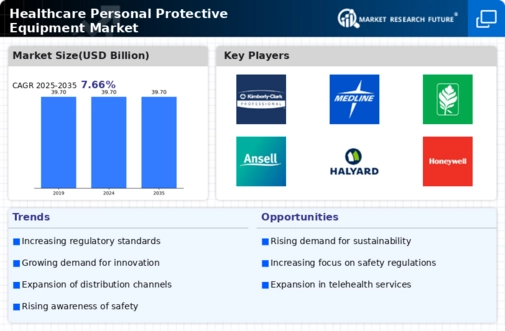
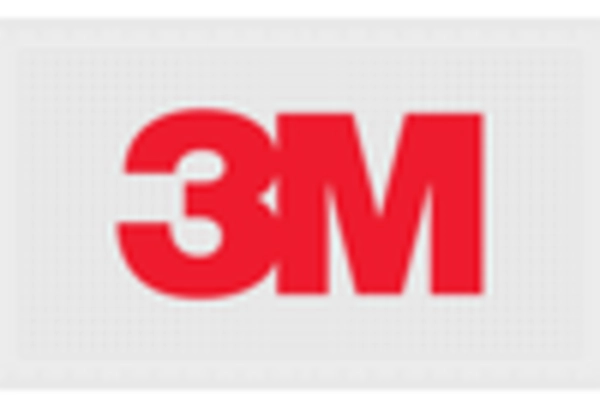
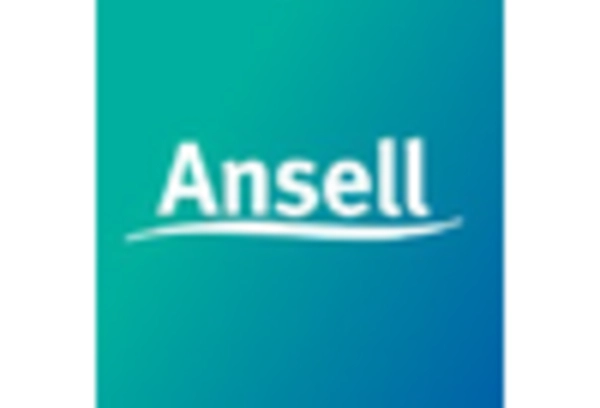
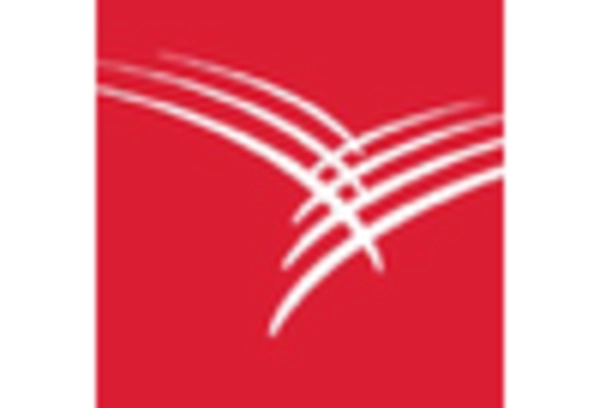
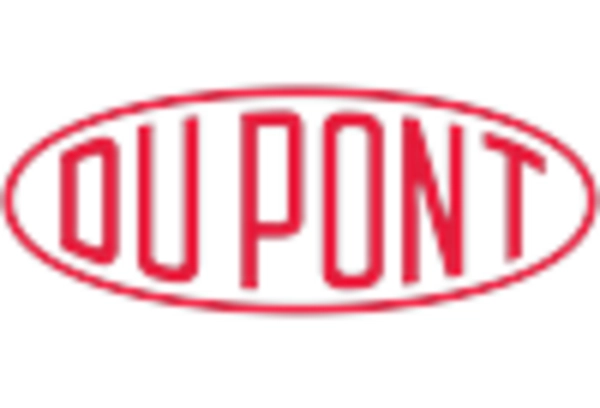

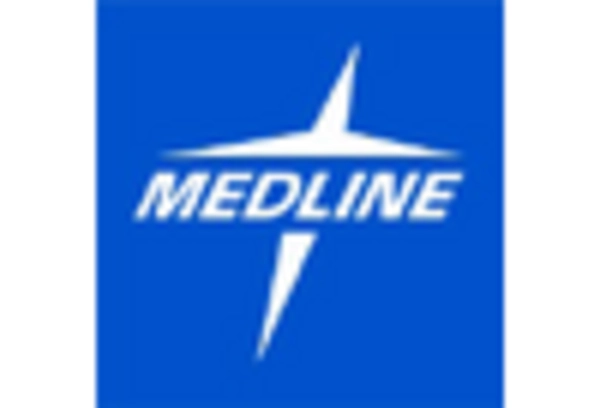









Leave a Comment